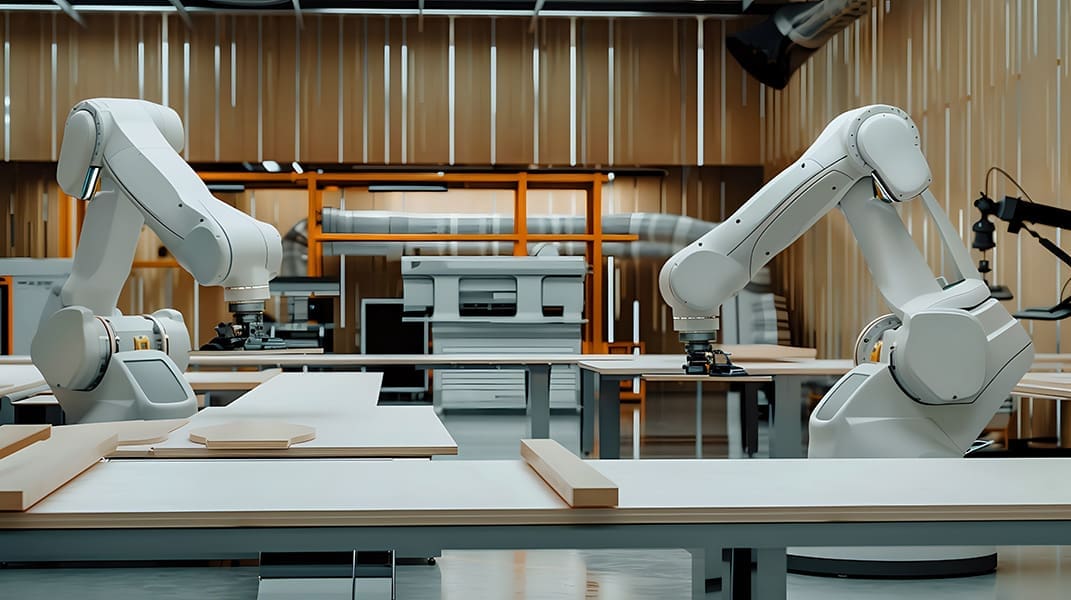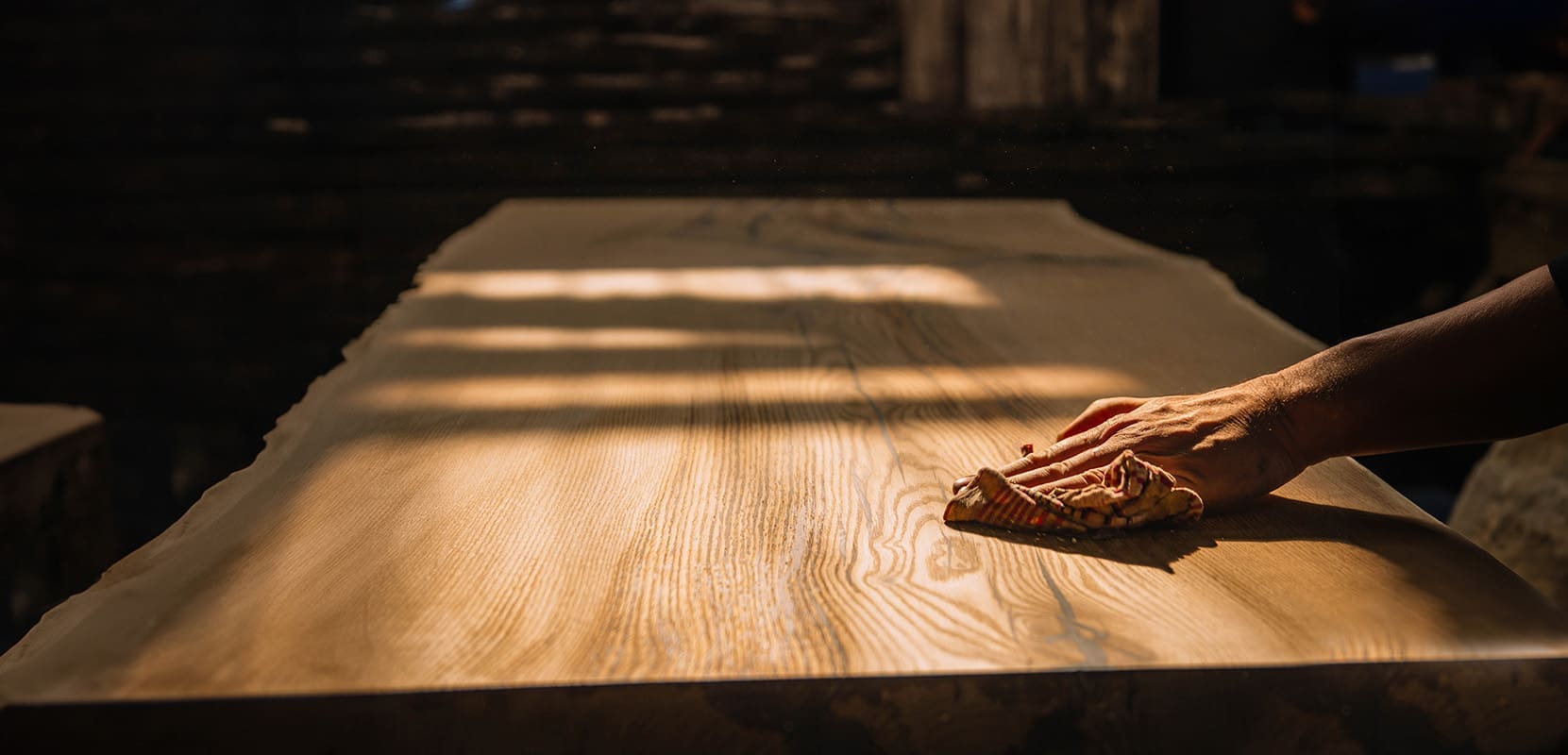In today’s fast-paced, convenience-driven society, the market is flooded with mass-produced items. From furniture to kitchenware, clothing to electronics, we are surrounded by products that are created quickly, cheaply, and in large quantities. But as we increasingly prioritize speed and cost over quality and uniqueness, there’s a growing movement that calls us back to a time when things were made by hand, with care, craftsmanship, and an eye for detail. This movement celebrates the value of handmade goods, particularly in the realm of woodcraft, where artisans pour their hearts into every piece they create.

Traditional craftsman at work using traditional tools
In this article, we’ll explore why handmade matters, especially in a world dominated by mass production. We’ll delve into the quality, uniqueness, and emotional value of hand-made, or artisanal, woodcraft, and why choosing handcrafted over factory-made products is more than just a purchase—it’s an investment in tradition, sustainability, and individuality.
The Decline of Craftsmanship in the Age of Mass Production
Mass production began during the Industrial Revolution and has since transformed the way we live and consume. Factories can churn out thousands of identical products in the time it would take a single craftsperson to complete just one. This efficiency has made goods more accessible and affordable, but it has also led to a significant decline in craftsmanship.
In the world of mass production, the focus is on speed and cost-cutting, often at the expense of quality. Materials are chosen based on their availability and price rather than their suitability for the product, and automated machines replace skilled hands, leading to items that may look the same but lack the depth of character and durability found in handmade goods.

Mass-produced “White” furniture being mass-produced on an assembly line
For instance, a mass-produced wooden chair may be made from low-quality composite wood and assembled in minutes, but it will likely lack the strength and longevity of a chair handcrafted from solid oak by a skilled woodworker. Over time, the mass-produced chair may warp, break, or simply lose its appeal, while the handmade chair, if properly cared for, can last a lifetime or even become an heirloom.
The Quality of Artisanal Woodcraft
When you purchase an artisanal woodcraft product, you’re investing in quality. Handmade items are often crafted from higher-grade materials, chosen for their beauty, durability, and suitability for the intended use. Artisans take the time to understand the properties of each type of wood, selecting the perfect piece for each project. This careful selection process ensures that the final product is not only functional but also aesthetically pleasing and long-lasting.

Hand-Made Solid Oak dining table made using traditional methods.
Moreover, the attention to detail in handmade woodcraft is unparalleled. Every cut, joint, and finish is executed with precision and care. Unlike mass-produced items, where imperfections are overlooked or accepted as part of the process, artisans strive for perfection in every aspect of their work. This dedication to excellence is evident in the final product, which often features intricate details, smooth finishes, and a level of craftsmanship that simply cannot be replicated by machines.
The durability of handmade woodcraft is another aspect that sets it apart from mass-produced goods. Artisans use traditional joinery techniques that have been honed over centuries, resulting in stronger, more resilient products. A well-crafted wooden table or chair can withstand years of use and still retain its structural integrity and beauty, making it a wise investment for any home.
Uniqueness: A Reflection of the Artisan’s Touch
One of the most compelling reasons to choose handmade woodcraft over mass-produced items is the uniqueness of each piece. No two handmade items are exactly alike, even if they are made by the same artisan. This is because every piece of wood has its own distinct grain pattern, colour variations, and natural imperfections, which the craftsperson works with rather than against.
In contrast, mass-produced items are designed to be uniform, with every product coming off the assembly line looking exactly like the one before it. While this may be desirable in some cases, it also means that these items lack character and individuality. When you buy a mass-produced piece, you’re buying something that thousands, if not millions, of other people also own.

Hand-Made Solid Oak dining table made using traditional methods.
On the other hand, a handmade item is a reflection of the craftperson’s creativity, skill, and personal style. It carries the maker’s mark—whether that’s a unique design element, a specific technique, or even the slight variations that come from being made by hand. Owning a piece of artisanal woodcraft means owning something truly one-of-a-kind, with its own story and personality.
Emotional Value: Connecting with the Maker and the Craft
In a world where we’re increasingly disconnected from the things we own, handmade goods offer a way to reconnect with the process of creation. When you buy a mass-produced item, you’re purchasing something that was made in a factory, often halfway around the world, by machines or workers who have no personal investment in the final product. There’s no story, no connection, no sense of the human effort that went into its creation.
Handmade items, however, come with a story. When you purchase an artisanal woodcraft product, you’re not just buying an object—you’re buying a piece of the artisan’s life and work. You’re supporting their craft, their passion, and their livelihood. This connection adds a layer of emotional value to the product that simply cannot be replicated by mass-produced goods.
Moreover, handmade items often carry a sense of tradition and heritage. Many artisans use techniques that have been passed down through generations, preserving skills that might otherwise be lost. When you buy handmade, you’re helping to keep these traditions alive, ensuring that future generations can continue to enjoy and appreciate the beauty of artisanal craftsmanship.
Sustainability: Handmade as an Eco-Friendly Choice
Another significant advantage of handmade woodcraft is its sustainability. Mass production is often associated with environmental harm—deforestation, pollution, and waste are common issues in industries that prioritize speed and profit over environmental responsibility. Mass-produced wooden items may be made from wood sourced unsustainably, contributing to deforestation and habitat loss.
In contrast, many artisans prioritize sustainability in their work. They may source their wood locally, use reclaimed or recycled materials, and adopt environmentally friendly practices in their workshops. By choosing handmade, you’re supporting small-scale production that often has a much lower environmental impact than mass-produced goods. This is not just a purchase—it’s a statement about your values and your commitment to protecting the planet.
Conclusion: The Lasting Value of Handmade Woodcraft
In a world where mass-produced items dominate the market, handmade goods offer a refreshing alternative. They represent quality, uniqueness, emotional value, and sustainability—all qualities that are increasingly important to consumers today. When you choose artisanal woodcraft, you’re not just buying a product; you’re investing in a piece of art, a tradition, and a connection to the maker.
Handmade matters because it brings us back to a time when things were made with care, skill, and love. It reminds us that there is value in the human touch, in the imperfections that make something unique, and in the stories that these objects carry. In a mass-produced world, handmade woodcraft stands as a testament to the enduring appeal of craftsmanship, individuality, and sustainability.





